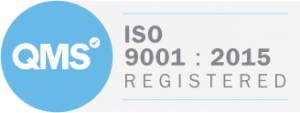
Employee Ownership Trust Transaction Finance
One of the first questions we often get from business owners looking into potentially selling their company to an Employee Ownership Trust, or EOT, is how is the sale financed? This is an important question, as often the vendor is also looking at a third-party sale and he or she needs to understand whether they will receive cash at completion and, if so, how much. This allows them to make an informed decision as to the best sale alternative. While there are a number of reasons to sell to an EOT other than the cash received at completion, it is certainly an important consideration.
To answer this question, we need to look at several factors. First, is there any excess cash on the balance sheet? Excess cash would be cash in excess of that required to operate the business. If so, the excess cash would be added to the equity value of the business and can be paid out as part of the purchase price on a tax-free basis. While it’s always a positive to be able to distribute cash on a tax-free basis, for most businesses this won’t be significant enough to sway an owner’s decision on the type of sale to undertake. The most important factor in determining potential cash available at completion is the debt capacity of the business. While lenders look at debt capacity in several ways, the primary factor is the cash flow available to support the repayment of the debt.
Understanding the minimum debt service coverage required by lenders will then let you determine how much debt the company can support, given typical repayment terms. As lenders typically require repayment over a maximum five to seven year period, knowing the required debt service coverage ratio allows you to back into the amount of debt the company can support.
With respect to the cash flow available to support repayment of the loan, lenders use what is referred to as a Debt Service Coverage (in some cases, Fixed Charge Coverage) ratio. This is a straightforward calculation that compares the cash flow available to support the repayment to the debt service required.
While it can be calculated in several ways, one common methodology is shown below:
EBITDA (Earnings Before Interest, Taxes, Depreciation and Amortisation)
Less: Cash
Taxes and Cash
Capital Expenditures
Equals: Free
Cash Flow
Free Cash Flow represents the annual cash flow available to support debt service. For an EOT sale, there will typically be two covenant calculations, assuming the sale is financed with bank debt and vendor loans.
These are Senior Debt Service Coverage and Total Debt Service Coverage. Senior Debt Service Coverage compares Free Cash Flow to the principal and interest payments on the bank debt and Total Debt Service Coverage compares Free Cash Flow to the principal and interest on the bank debt plus interest payments on the vendor loans (banks will generally not permit principal repayment on vendor loans while their debt is outstanding).
The actual calculations for each ratio are shown below:
Senior
Debt Service Coverage – Free Cash Flow/principal and interest on bank debt
Total
Debt Service Coverage – Free Cash Flow/senior debt service and vendor loan interest
Typical covenant levels might be a minimum of 1.35-1.50x for Senior Debt Service Coverage and 1.10-1.25x for Total Debt Service Coverage. Please keep in mind these levels may vary significantly based upon the type of business, historical and projected performance, etc. All situations are different and these numbers are intended as examples only. Debt service coverage is only one aspect of any lender’s credit underwriting process, but it is the most important aspect.
By looking at the company’s debt service capacity plus its excess cash, a vendor may be able to get a good sense of how much cash he or she could potentially receive at completion.
This allows for a more informed decision among potential sale alternatives. We would be happy to discuss your particular circumstances and analyse the feasibility of an EOT transaction that would meet your objectives.
Please contact Richard Cowley via email at enquiries@rm2.co.uk or via telephone at 0208 949 5522 (office) with any questions, or consult our free fact sheet downloads for more information.


